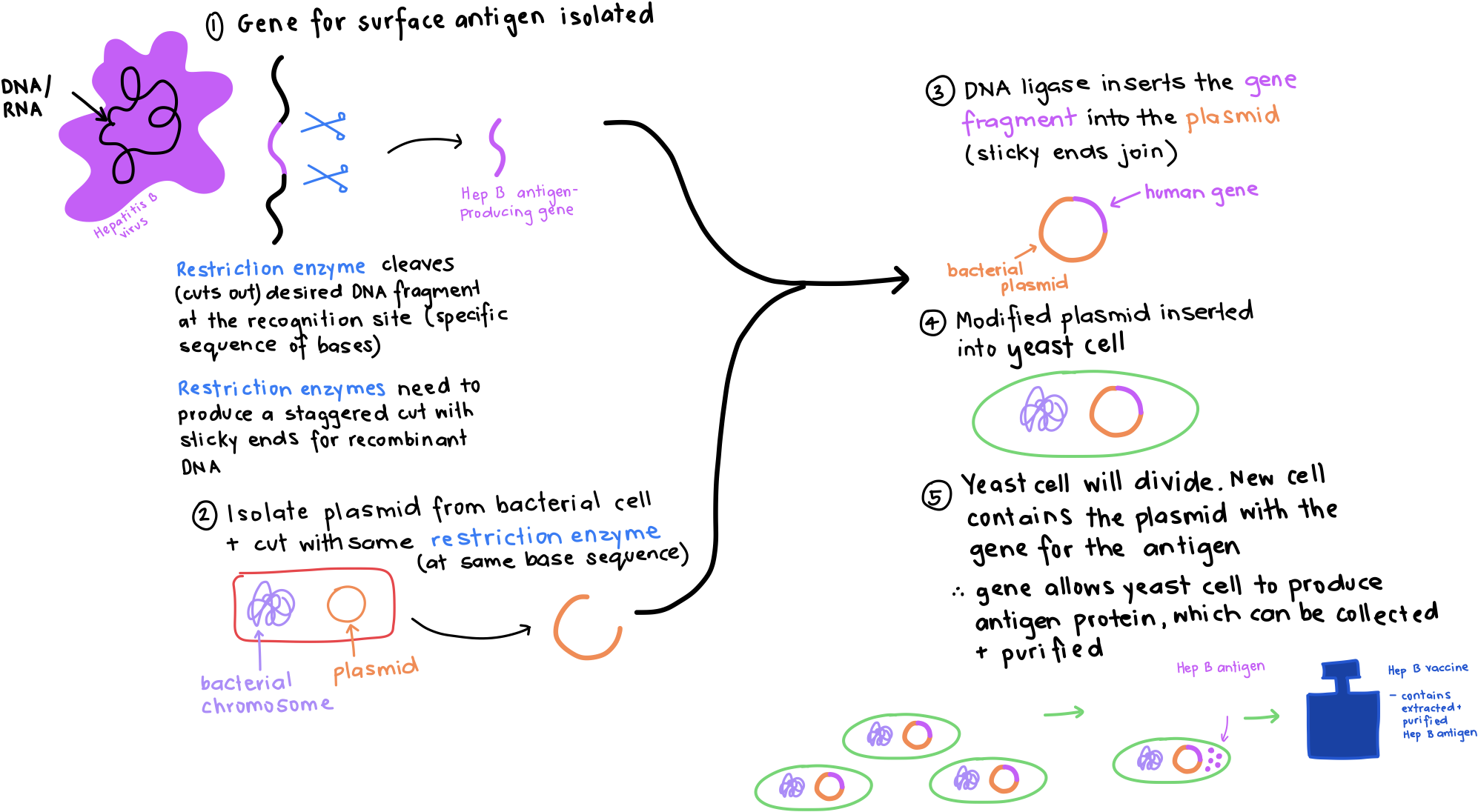Objective 3 unknown
1/4
There's no tags or description
Looks like no tags are added yet.
Name | Mastery | Learn | Test | Matching | Spaced |
|---|
No study sessions yet.
5 Terms
Explain the inflammatory response as a non specific immune response, using terms such as mast cells, histamine, heparin and macrophages.
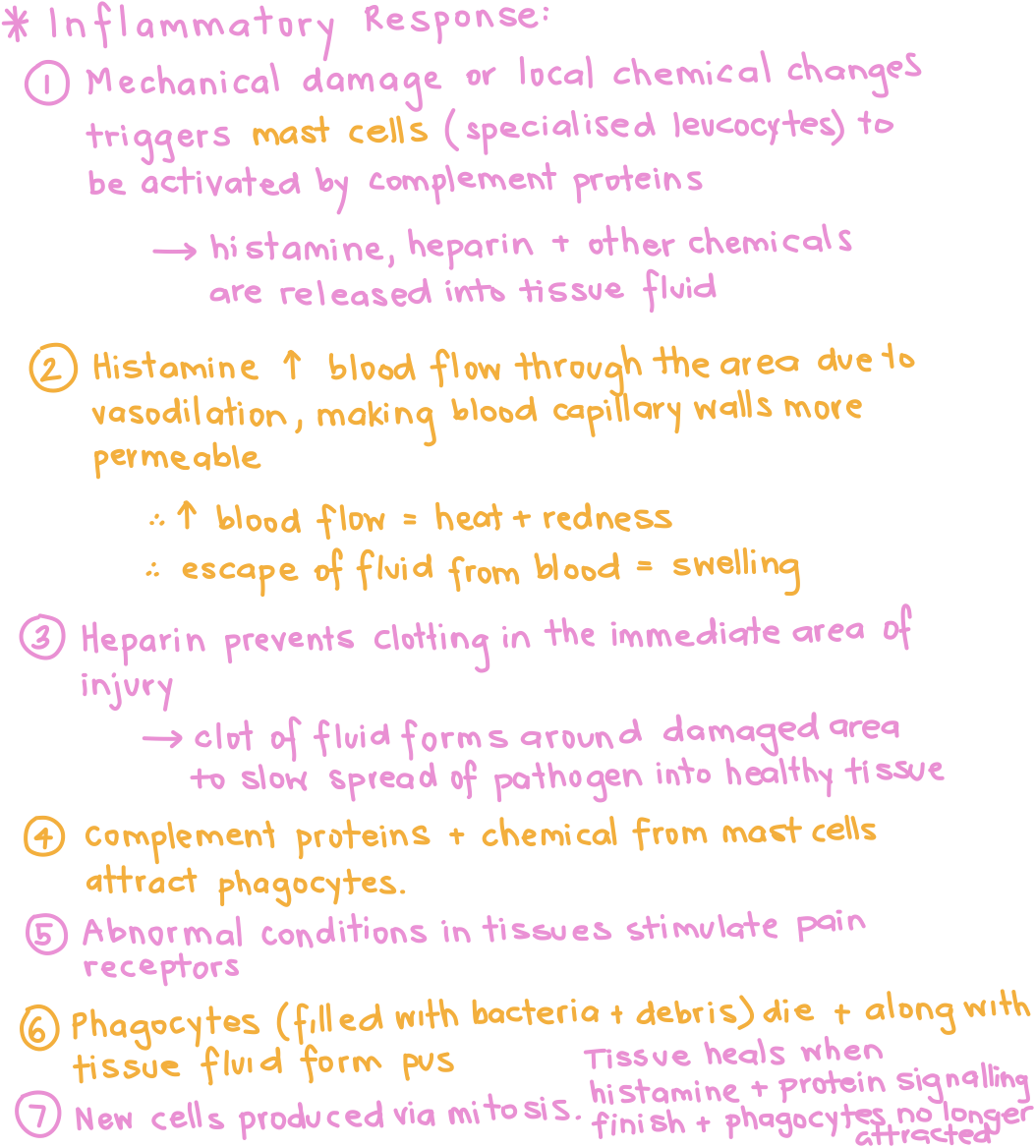
Explain the causes and benefits of a fever.
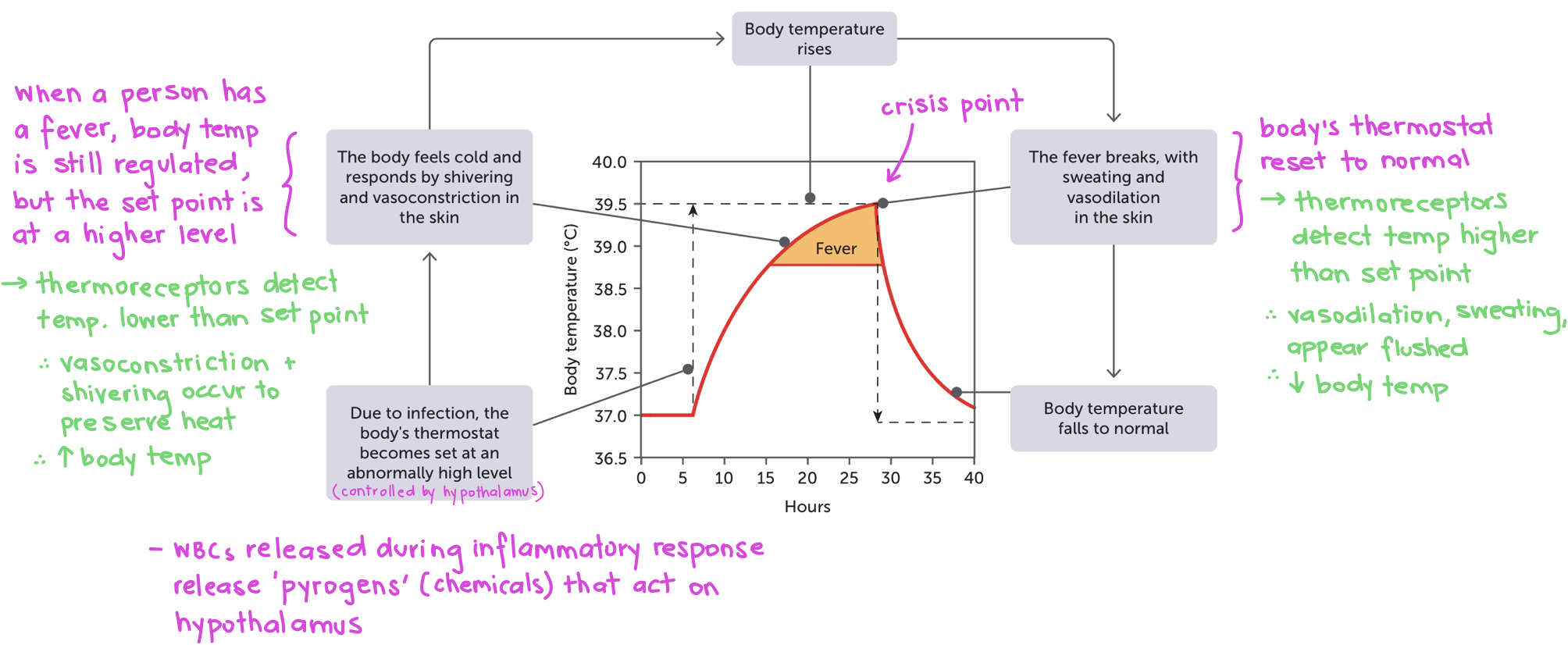
Explain the role played by the lymphatic system, macrophages and phagocytes in defending the body against invasion by pathogenic micro-organisms.
Action of Phagocytes: action of white blood cells attacking and engulfing pathogens. Phagocytes are specialised white blood cells that engulf & digest micro-organisms and cell debris. Types of cells that are:
phagocytic: monocytes/macrophages, neutrophils (WBCs), dendritic cells.
This eliminates many pathogens before and infection has a chance to take hold.
Tissue becomes inflamed ➡ monocytes leave blood, enter tissue & differentiate into macrophages (large phagocytic cells).
Remove microbes and dying cells
Macrophages either:
Move through tissues looking for and destroying pathogens.
Are fixed in one place and only deal with pathogens that come to them.
Dendritic cells:
Cells that have the ability to detect, engulf and process foreign particles.
They use this information about ingested particles to assist with specific immunity.
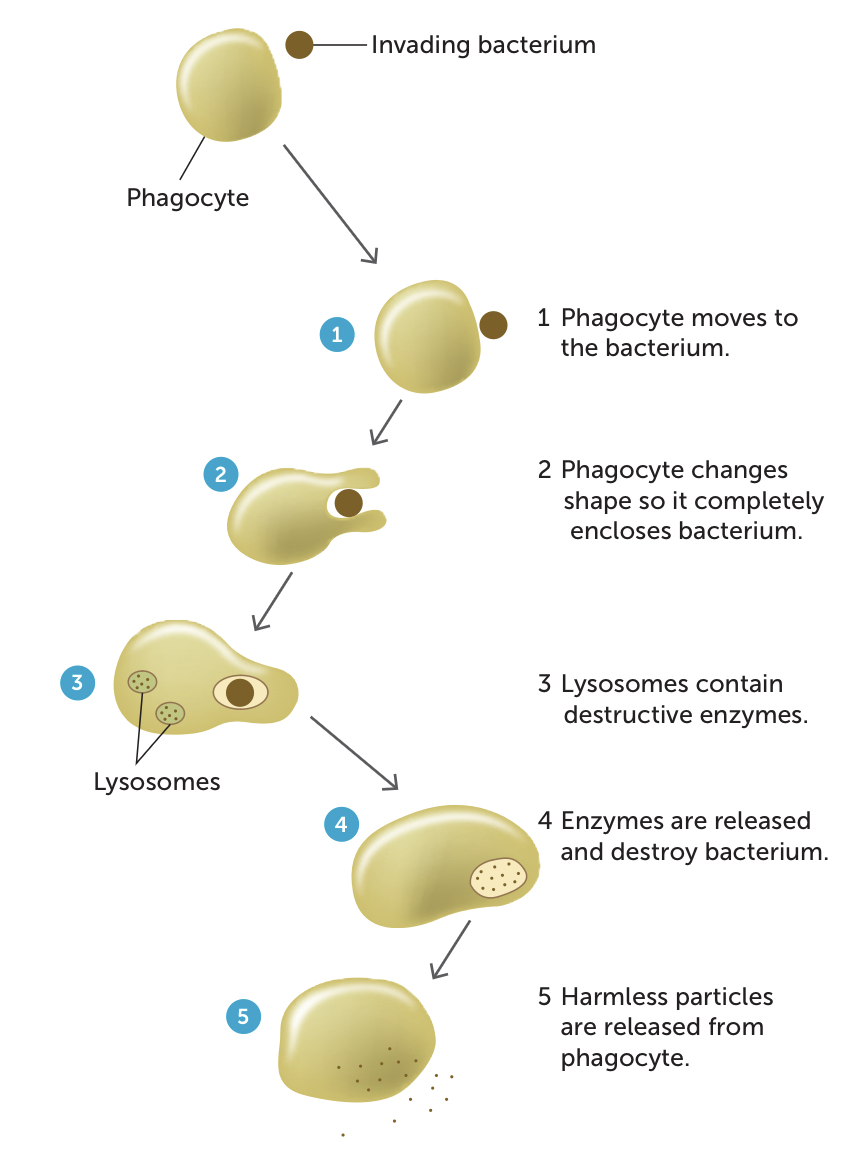
Describe the difference between active and passive immunity.
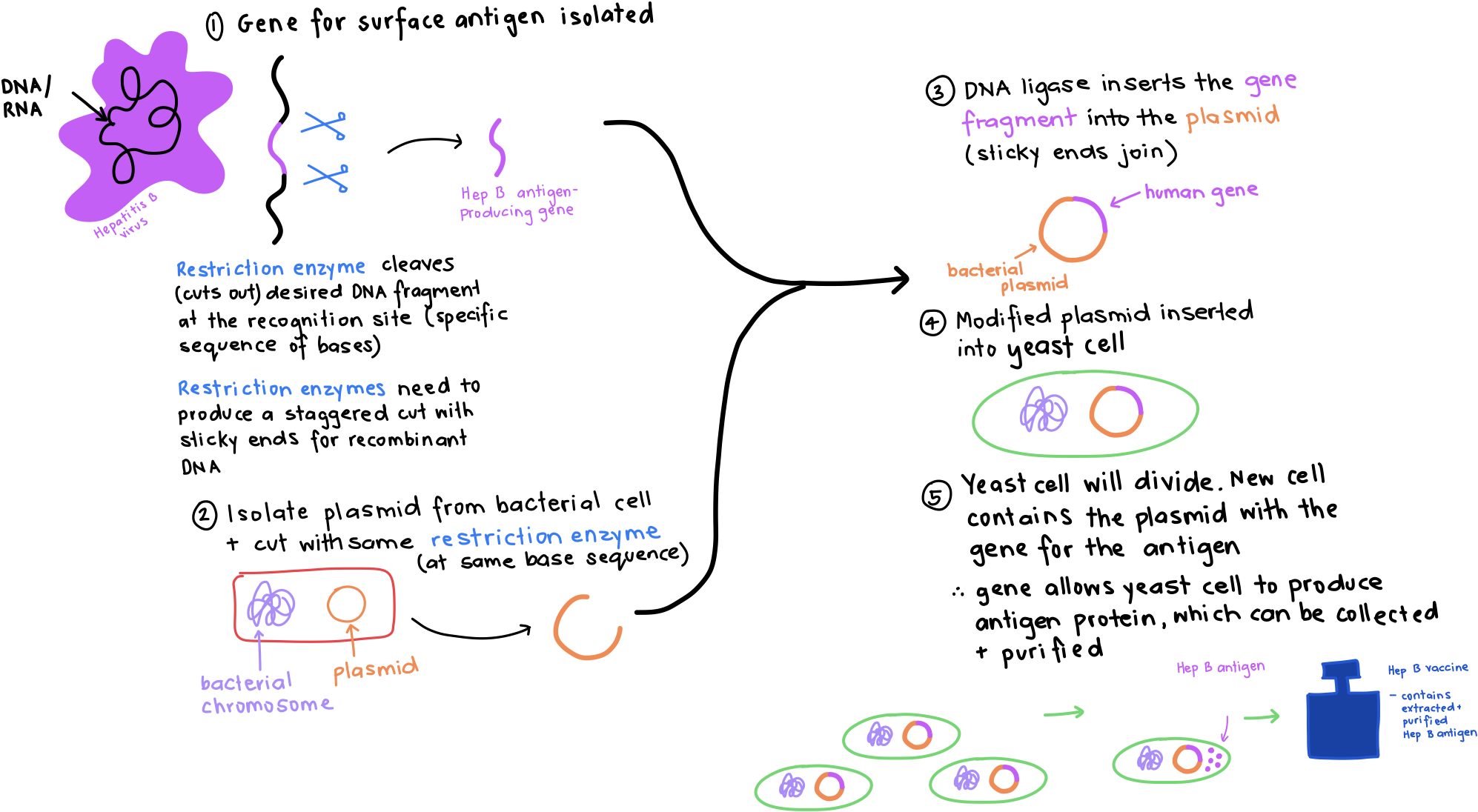
Explain how recombinant DNA is used to make vaccinations.
